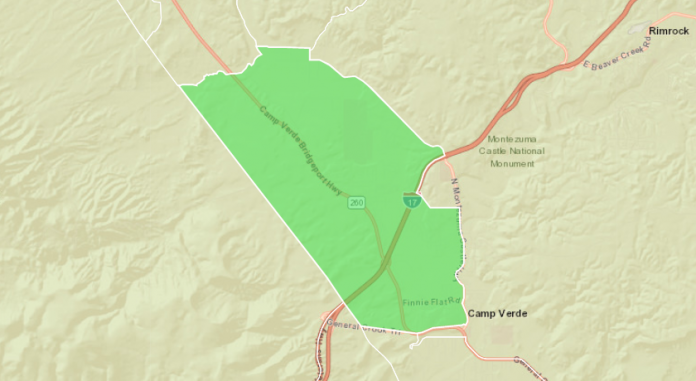In December, U.S. Congress passed the Tax Cuts and Jobs Act, one of the largest sets of changes to the federal tax code in the past few decades. While much of the coverage of the bill focused on its sweeping changes to corporate and pass-through business tax rates and the amounts paid by individuals, one less-noticed provision could have a huge effect on Camp Verde.
The TCJA includes a new tax incentive for “opportunity zones,” specially designated low-income areas that are targets for development. For real estate investors, making an investment for at least five years in an opportunity zone allows for a capital gains tax deduction on the invested money, while an investment of 10 years or more allows for an investor to pay no capital gains tax at all on the profits from the investment.
To be eligible for opportunity zone status, a tract of land must have at least 20 percent of its population below the Federal Poverty Line, and must have a median income lower than that of its state or nearest metro area. States and localities applied for designation as opportunity zones in the early months of 2018, and on May 18, the U.S. Treasury Department approved zones in most states, including Arizona.
One of those opportunity zones is in Camp Verde. The census tract along State Route 260, from close to where Old Highway 279 meets the highway down to the northern part of town where SR 260 meets with Main Street, has been designated as an opportunity zone by the Arizona governor and the Treasury Department. And Camp Verde is hoping to take advantage of it to bring in developers.
“What made this so attractive to us was that it also included the growth corridor along SR 260, and all that commercial area around the Finnie Flat and 260 area,” said Steve Ayers from the Camp Verde economic development department. Ayers contacted the county and the state in the hopes of making the area along SR 260 an opportunity zone, since the town has already made plans to take advantage of the refurbishment of the highway to bring new businesses into the area. “As soon as I saw that was being included, we went for it,” Ayers said.
“It’s a very broad program,” said Brady Meixell, a research assistant in the Metropolitan Housing and Communities Policy Center at the Urban Institute in Washington, D.C. “There’s not a ton of restrictions on what you can invest in for an opportunity zone.”
The main requirements are that an investment must improve the real estate holding in some way, and that it takes time for the full incentive to take effect, encouraging long-term investments.
Though Meixell said there are potential downsides for how this kind of development might affect urban areas with large amounts of people already living in the area in question, he sees little to fear in a rural area like Camp Verde, where much of the city government is already eager to spur development.
“When I say the opportunity zone incentive is working for Camp Verde, it’s definitely working for Camp Verde,” Ayers said.
So far, even though the designation is less than a month old, it has affected the investment decisions of two of the major developers in the area. Red Moon Development & Construction, which is in the process of beginning work on an RV park in Camp Verde, bought new land for development in the opportunity zone. Red Moon did not respond to a request for comment.
And for Out of Africa, which was already planning for a large expansion in the near future before the opportunity zone designation came along, the tax incentive can be helpful in bringing investors into the project.
“When we talk to people, we’ll say, ‘Here’s something else you can consider which we didn’t have 30 days ago,’” said Bill Jump, a co-owner of Out of Africa. “It will impact our ability to talk to them about why they should make an investment in whatever we may be doing.”
In addition to Out of Africa, Jump invests in real estate throughout the Verde Valley. He said he hopes to take advantage of the designation in that respect, as well.
“It supports the Verde Valley and the long-term development that we’re going to see here I think will be significant,” Jump said.
The opportunity zone in Camp Verde only just went into effect, and the long-term impact of a tax incentive that requires long-term investments is yet to be seen. But for those interested in spurring development in Camp Verde and other low-income areas, this could be a big deal.
“You’re looking at this trillion dollar tax bill, and this is only a few billion dollars of that, but the impacts are possibly massive,” Meixell said.
Jon Hecht can be reached at 634-8551 or email jhecht@larsonnewspapers.com



